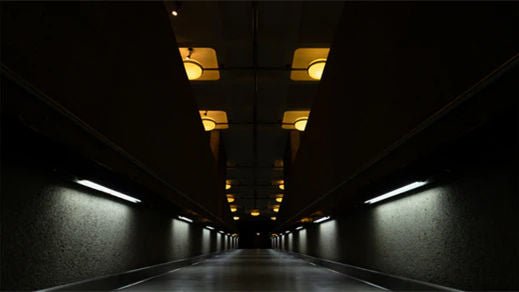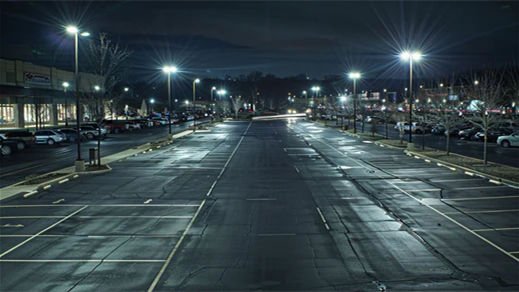Garages are multipurpose spaces used for parking vehicles, storage, workshops, and various hobbies. Adequate lighting is essential for safety, security, and functionality in these environments. Good garage lighting ensures that tasks can be performed efficiently, reduces the risk of accidents, and enhances the overall usability of the garage. Whether it's searching for tools, performing detailed work, or simply navigating the space, proper garage lights are crucial.
Choosing the right type of garage lighting depends on several factors, including the size of the garage, its primary use, and your personal preferences. Here are some of the best garage lights:
Types of Lighting for a Garage
- LED Lighting
Advantages:
- Energy-Efficient: Uses less power compared to other types of lighting, resulting in lower electricity bills.
- Long-Lasting: LEDs have a long lifespan, often exceeding 25,000 hours.
- Bright and Even Illumination: Provides clear, bright light without flickering.
- Low Heat Emission: LEDs remain cool to the touch, reducing the risk of heat buildup.
Types:
- LED Shop Lights: These are usually linear fixtures that can be mounted on the ceiling. They provide wide, even coverage, ideal for general garage lighting.
- LED Bulbs: Standard bulbs that can fit into existing fixtures. They come in various brightness levels and color temperatures.
- LED Strip Lights: Flexible and adhesive-backed, these can be placed under shelves, cabinets, or along walls for garage lighting.
- Fluorescent Lighting
Advantages:
- Cost-Effective: Initial cost is relatively low, and they provide good illumination.
- Bright and Diffuse Light: Suitable for large areas as they spread light evenly.
Types:
- T5 and T8 Fixtures: T5 fixtures are smaller and more efficient, while T8 fixtures are more common and provide ample light. Both are available in various lengths, typically 4 feet, and are ideal for ceiling installation.
- Compact Fluorescent Lamps (CFLs): Can be used in standard bulb fixtures, offering an energy-efficient alternative to incandescent bulbs.
- Halogen Lighting
Advantages:
- Bright, Focused Light: Excellent for task lighting due to its high intensity and good color rendering.
- Instant-On: Provides immediate full brightness without warm-up time.
Types:
- Portable Work Lights: Can be positioned as needed, perfect for detailed work or specific areas.
- Fixed Halogen Lights: Can be installed in specific work areas for focused task lighting.
- Incandescent and CFL Bulbs
Advantages:
- Widely Available: Easy to find and replace.
- Warm Light: Provides a warmer color temperature, which can be desirable for certain tasks.
Types:
- Standard Incandescent Bulbs: Less energy-efficient and shorter lifespan compared to LEDs and CFLs.
- Compact Fluorescent Lamps (CFLs): More efficient than incandescent bulbs, with a longer lifespan and available in various color temperatures.

- Natural Lighting
Advantages:
- Energy-Saving: Reduces the need for artificial lighting during the day.
- Enhances Mood: Natural light can create a more pleasant working environment.
- Skylights: Installed in the roof to bring in natural light from above.
- Windows: Adding windows to the garage can significantly increase natural light, reducing the need for artificial lighting.
- Task Lighting
Advantages:
- Focused Illumination: Provides light exactly where it's needed, improving visibility for detailed tasks.
- Under-Cabinet Lights: Ideal for workbenches or areas where tools are used.
- Adjustable Desk Lamps: Can be positioned on work surfaces to provide direct light for specific tasks.
- Motion Sensor Lights
Advantages:
- Convenience: Automatically turns on when motion is detected, which is great for entering the garage with your hands full.
- Energy-Saving: Lights are only on when needed, reducing electricity usage.
- Ceiling-Mounted Sensors: Detect motion from above and activate overhead lights.
- Wall-Mounted Sensors: Can be placed at entry points to the garage to activate lights upon entry.

Considerations When Choosing Garage Lighting
Brightness
- Lumens: Measure of the total amount of visible light. For garages, aim for a total of at least 50 lumens per square foot.
- Watts: While wattage indicates energy consumption, it doesn’t always correlate with brightness. Look at lumens for brightness.
Color Temperature
- Measured in Kelvins (K): Determines the color of the light.
- Warm White (2700K - 3000K): Similar to incandescent light, creating a cozy atmosphere.
- Cool White (4000K - 5000K): Provides a bright, clear light similar to daylight, ideal for work environments.
- Daylight (5000K - 6500K): Very bright and crisp, great for high-visibility tasks.
Durability
- Material: Choose garage lights with sturdy housings, especially if the garage is used for heavy-duty activities.
- Ingress Protection (IP) Rating: Indicates the level of protection against dust and moisture. For garages, an IP rating of at least IP44 is recommended.
Energy Efficiency
- Energy Star Rating: Look for lights with an Energy Star rating for guaranteed energy efficiency.
- LEDs and CFLs: Both are more energy-efficient compared to incandescent bulbs, with LEDs being the most efficient.
Installation and Maintenance
- Ease of Installation: Some garage lighting options are easier to install than others. LED strips, for example, often come with adhesive backing and are easy to install.
- Maintenance Requirements: Consider how often bulbs need to be replaced and how easy it is to access and replace them.
Summary
When choosing garage lights, consider the specific needs and uses of the space. LED lights are generally the best option due to their energy efficiency, brightness, and longevity. Fluorescent lights are a cost-effective alternative, while halogen lights provide intense, focused light for specific tasks. Incorporating natural light through windows or skylights can reduce energy costs and enhance the workspace. Task lighting is essential for specific work areas, and motion sensor lights add convenience and energy savings. Ensure the chosen lights are durable, energy-efficient, and provide the appropriate brightness and color temperature for your garage activities.


































Leave a comment
This site is protected by hCaptcha and the hCaptcha Privacy Policy and Terms of Service apply.